The Top 12 Würzburg Sights: A Comprehensive Travel Guide
Würzburg is one of Germany's most charming cities, known for its magnificent castles, historic bridges and picturesque vineyards. This article focuses on the top 12 Würzburg attractions that will delight every visitor. 1. The Würzburg Residence The Würzburg Residence is one of the most magnificent and important sights in Würzburg. It is a baroque jewel and reflects the city's cultural and historical heritage. The residence was declared a World Heritage Site by UNESCO in 1981 and attracts thousands of tourists from all over the world every year. The residence was built at the request of Prince-Bishop Johann Philipp Franz von Schönborn and his brother ...

The Top 12 Würzburg Sights: A Comprehensive Travel Guide
Würzburg is one of Germany's most charming cities, known for its magnificent castles, historic bridges and picturesque vineyards. This article focuses on the top 12 Würzburg attractions that will delight every visitor.
1. The Würzburg Residence
The Würzburg Residence is one of the most magnificent and important sights in Würzburg. It is a baroque jewel and reflects the city's cultural and historical heritage. The residence was declared a World Heritage Site by UNESCO in 1981 and attracts thousands of tourists from all over the world every year.
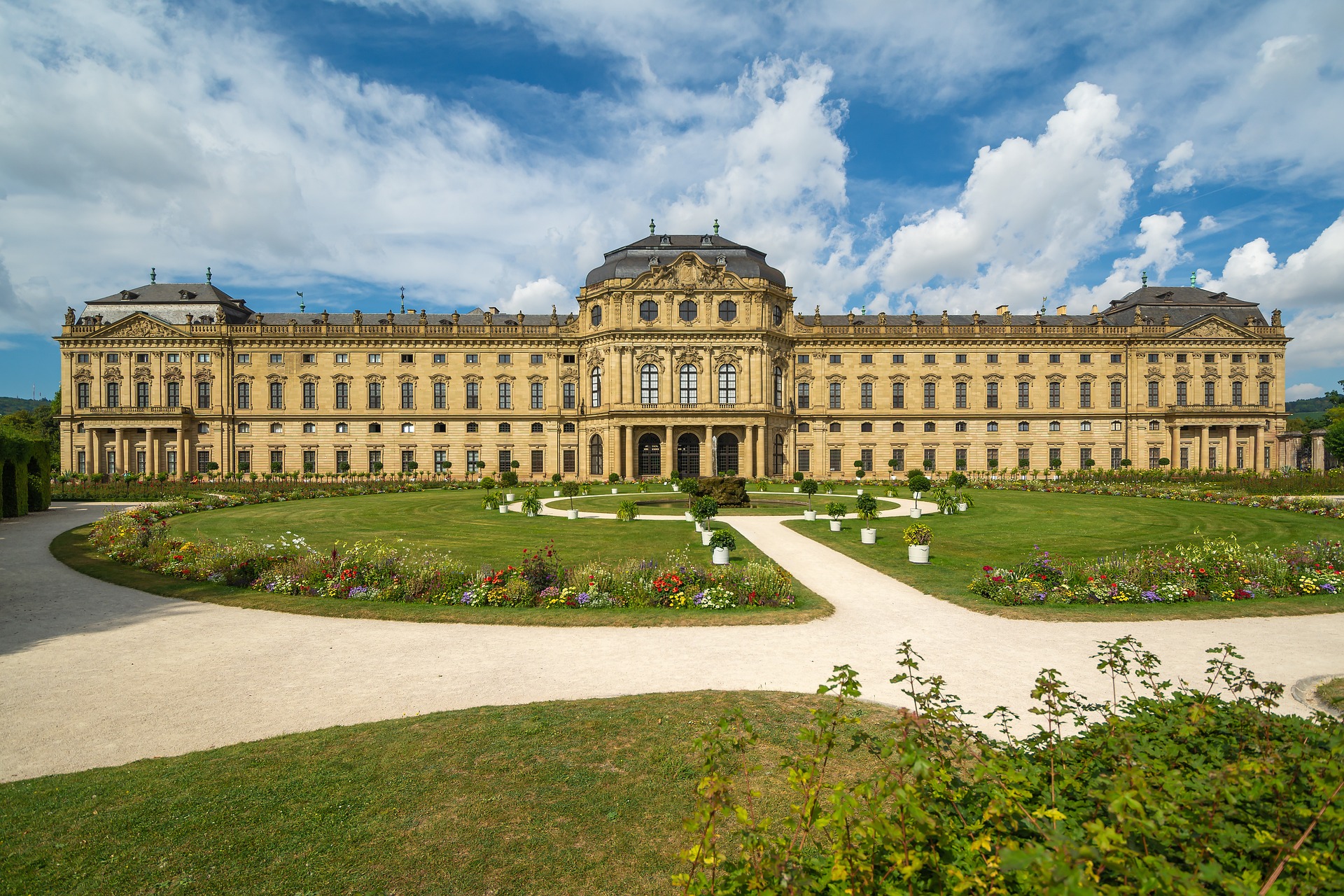
The residence was built at the request of Prince-Bishop Johann Philipp Franz von Schönborn and his brother Friedrich Carl von Schönborn, who succeeded him. The construction lasted from 1720 to 1744 and involved some of the most famous artists and Architects of that time, including Balthasar Neumann, who served as chief architect, and Giovanni Battista Tiepolo, who created the impressive ceiling fresco.
As you enter the residence, you are greeted by the impressive stairwell dome, which houses the largest ceiling fresco in the world. The fresco, painted by Giovanni Battista Tiepolo, depicts the four continents known at the time: Europe, Africa, Asia and America. This masterpiece is a feast for the eyes and a stunning example of 18th century artistic mastery.
The residence consists of several magnificent rooms, including the White Hall, the magnificent Imperial Hall and the Hall of Mirrors. The White Hall is known for its stucco work, by Antonio Bossi, which provides an excellent contrast to the dark wooden floor. The Imperial Hall is the heart of the residence, with large murals depicting scenes from the Würzburg and the Roman history represent. The Hall of Mirrors is a prime example of Rococo design, with mirrored walls and gilded decorations.
Another highlight of the Würzburg Residence are the courtyard gardens. These were designed in French and English styles and offer a quiet oasis in the middle of the city. The gardens are beautifully landscaped with symmetrical patterns, colorful flower beds, water fountains and sandstone figures. In summer, visitors can stroll in the gardens, enjoy the fresh air and admire the impressive architecture of the residence.
The Würzburg Residence is not only a place of beauty, but also a testimony to the history and culture of the city. It offers a deep insight into 18th century life and art and is an absolute must for anyone visiting Würzburg.
2. The Marienberg Fortress
The Marienberg Fortress is another outstanding attraction in Würzburg that fascinates visitors with its impressive architecture and rich history. As one of the city's most striking landmarks, the fortress sits majestically on a hill west of the city center and offers breathtaking views of Würzburg and the Main.

Marienberg Fortress has a long and eventful history. Its origins date back to 704, when a Christian church was built in its place. Over the centuries, the complex developed into a powerful fortress that became the residence of the prince-bishops of Würzburg. The fortress was expanded into an imposing complex in the 16th and 17th centuries, but it suffered significant damage during the Second World War and required careful restoration.
Today visitors can walk through the Fortress walls Stroll and admire the different architectural styles that reflect the different eras of the fortress. A highlight is the Fürstenbau, the former residence of the prince-bishops. Today it houses the Mainfränkisches Museum, which offers an extensive collection of art and crafts from the Franconian region.
Another notable feature of the fort is the Deep Well. With a depth of 104 meters, it is one of the deepest of its kind in Germany. The well was built in the Middle Ages to ensure the fortress's water supply and has been preserved to this day.
Marienberg Fortress is also known for its beautiful gardens. The Fürstengarten, designed in the style of a baroque garden, offers a quiet retreat with breathtaking views of the city and the river. The terraces are decorated with colorful flower beds and decorative bushes and are an ideal place for a picnic in summer.
Marienberg Fortress is more than just an impressive historical site. It is a living testimony to Würzburg's history that has endured over the centuries. A visit to the fortress is an absolute must for anyone who wants to discover the rich culture and historical heritage of Würzburg. Not only does it offer a fascinating journey into the past, but also one of the best views of the city and its surroundings.
3. The Old Main Bridge
The Old Main Bridge is another unmissable landmark in Würzburg and one of the city's most popular attractions. It is the oldest bridge over the Main and connects the old town with the Marienberg Fortress. The bridge is a prime example of medieval bridge architecture and a wonderful place to enjoy the scenic views of the city and river.
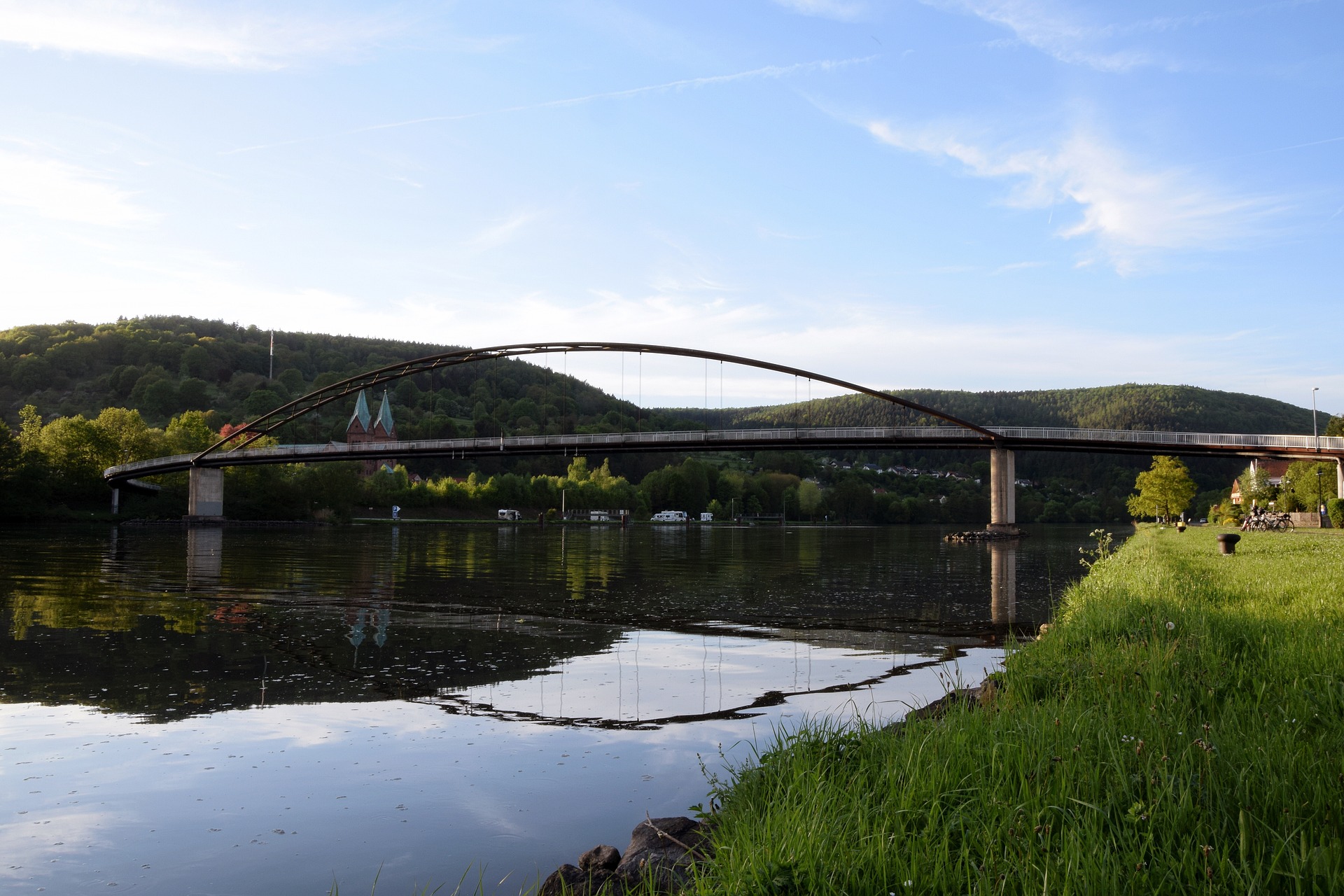
The Old Main Bridge was built in the 12th century and was rebuilt and expanded several times over the centuries. The bridge we see today dates primarily from the 18th century and is known for its twelve striking statues of saints and patricians placed along the bridge's crest. These statues were created in the Baroque style and give the bridge a special atmosphere.
A walk across the Old Main Bridge is an absolute must when visiting Würzburg. The views of Marienberg Fortress, the Würzburg Residence and the Main are simply breathtaking, especially at sunset. The bridge is also a popular meeting point for locals and visitors alike. It is customary to drink a “Brückenschoppen”, a glass of Franconian wine, while enjoying the view and watching the activity on the river.
Near the bridge are some of the city's best wine bars and restaurants where you can taste the local cuisine and of course the famous Franconian wine. The area around the bridge is particularly lively during the Würzburg Wine Festival, when the whole city is in a party mood.
The Old Main Bridge is more than just a connection between two parts of the city. It is a living symbol of Würzburg's history and culture and a place where you can fully enjoy the beauty of the city. A walk across the bridge, a glass of wine in your hand, the view of the historic buildings and the sparkling river - this is an experience that should not be missed in Würzburg.
4. St. Kilian's Cathedral
The Cathedral of St. Kilian is one of the most important sights in Würzburg and a masterpiece of Romanesque and Gothic architecture. As the fourth largest Romanesque church in Germany, the cathedral is impressive in size and is the spiritual heart of the city.
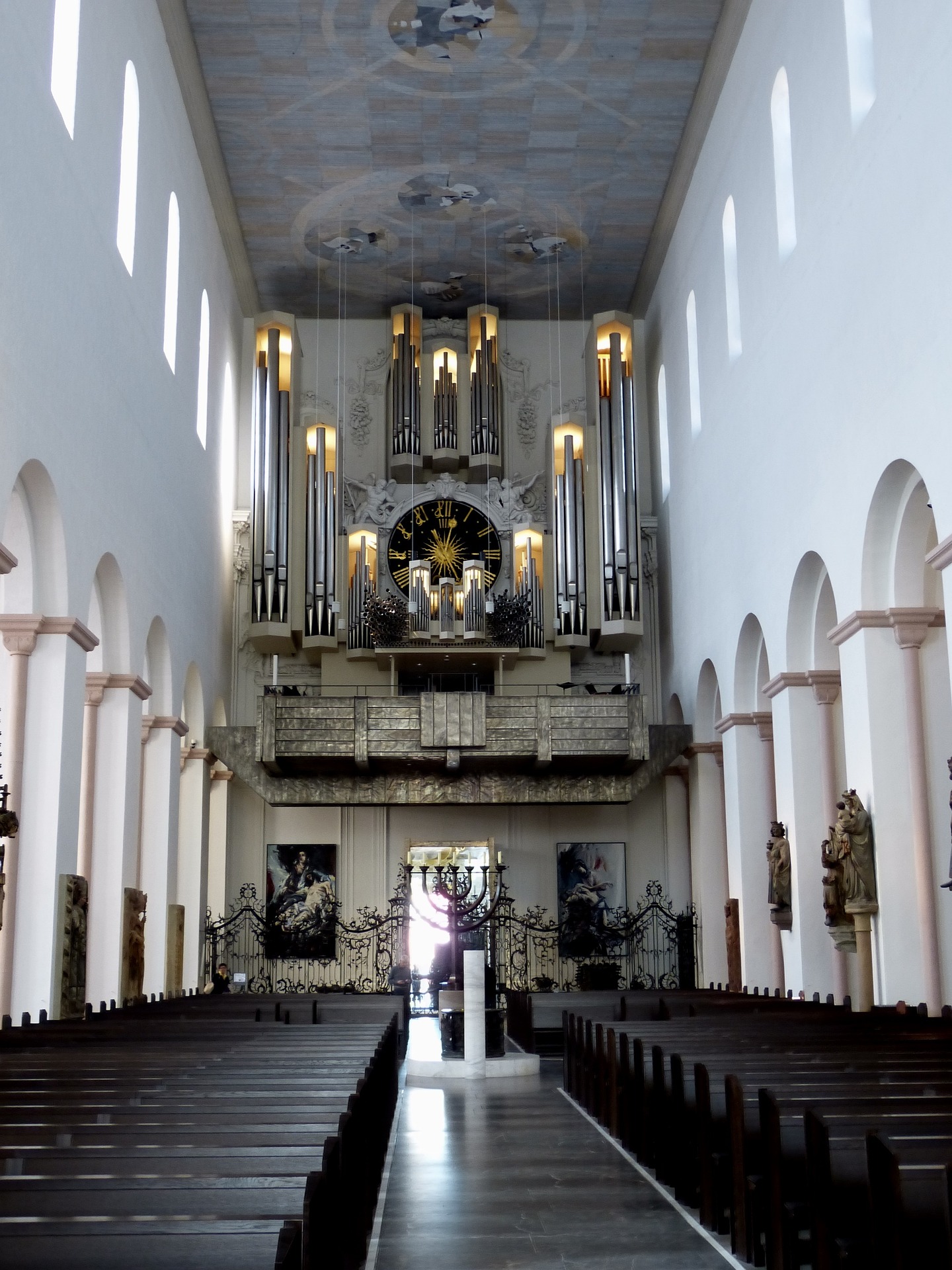
The construction of today's cathedral began in 1040 under Bishop Bruno of Würzburg and lasted almost a century. The cathedral was damaged by fire several times and was almost completely destroyed during the Second World War, but it has always been lovingly restored and rebuilt. Today it stands as a testimony to the perseverance and faith of the people of Würzburg.
St. Kilian Cathedral is named after the Irish monk Kilian, who came to Würzburg in the 7th century to preach Christianity. He and his companions were martyred here, and their relics are now in Kilian's crypt in the cathedral.
Inside the cathedral, visitors can admire a number of artistic and architectural highlights. Particularly noteworthy are the magnificent Romanesque portal, the Gothic choir stalls, which date from the 14th century, and the impressive Kilian's pulpit, a masterpiece of the Baroque period. The Schönborn Chapel, which serves as the burial place for the members of the influential Schönborn family, is also worth a visit.
Another highlight of the cathedral is St. Mary's Cathedral, which houses an impressive collection of medieval wall paintings. These frescoes, which date from the 13th century, show scenes from the life of Mary and are an important testimony to medieval art in Germany.
A visit to St. Kilian Cathedral is not only an impressive cultural and historical experience, but also an opportunity to find a moment of peace and reflection in the hustle and bustle of the city. Whether you are a fan of history and architecture or are simply looking for a place of silence, St. Kilian Cathedral is an absolute must when visiting Würzburg.
5. The Neumünster Church
The Neumünster Church is another impressive sight in Würzburg and an important place of faith and art. It is located near St. Kilian Cathedral and is known for its remarkable architecture and rich history.
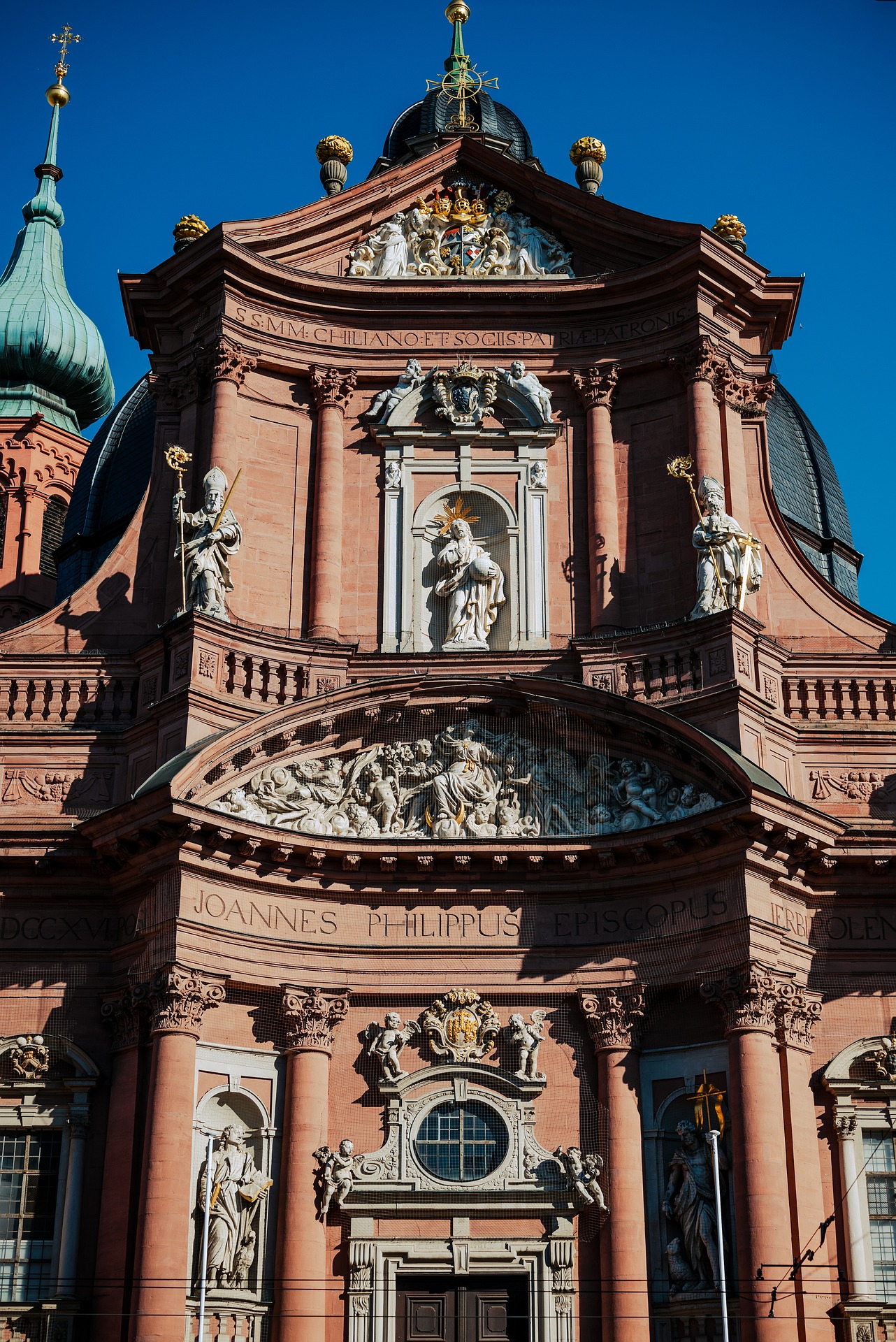
The history of the Neumünster Church dates back to the 8th century, when a monastery was founded here. However, the current church was mainly built in the 11th century and was rebuilt and expanded several times over the centuries. The church was badly damaged during the Second World War, but fortunately it was restored and restored to its original beauty.
The Neumünster Church is an impressive example of transitional architecture between Romanesque and Gothic. The red sandstone facade with its elegant arched windows and the high, pointed tower is particularly striking. The facade is decorated with sculptures of saints and other religious figures, providing an interesting contrast to the simple beauty of the stone walls.
Inside the church, visitors can admire a number of artistic and architectural highlights. Particularly noteworthy is the magnificent Baroque altar, designed by Balthasar Neumann. The altar is decorated with gold and surrounded by life-size statues of saints, providing an impressive backdrop for the liturgical celebrations.
Another highlight of the Neumünster Church is the Lusamgartl Chapel, which houses the remains of Saint Kilian and his companions. The chapel is an important place of pilgrimage and a place of worship for Saint Kilian, who is considered one of the patron saints of Würzburg.
The Neumünster Church is not only a place of beauty and faith, but also a living testimony to the history and culture of Würzburg. It offers a deep insight into the city's religious tradition and is an absolute must for anyone who wants to discover the spiritual side of Würzburg.
6. The Julius Hospital
The Juliusspital is another important attraction in Würzburg, highlighting not only its historical significance but also its role as a social institution and winery. It was founded in 1576 by Julius Echter, the then Prince-Bishop of Würzburg, and originally served as a hospital and retirement home. Today the Juliusspital is a modern social institution that still offers medical care, care and support for people in need.
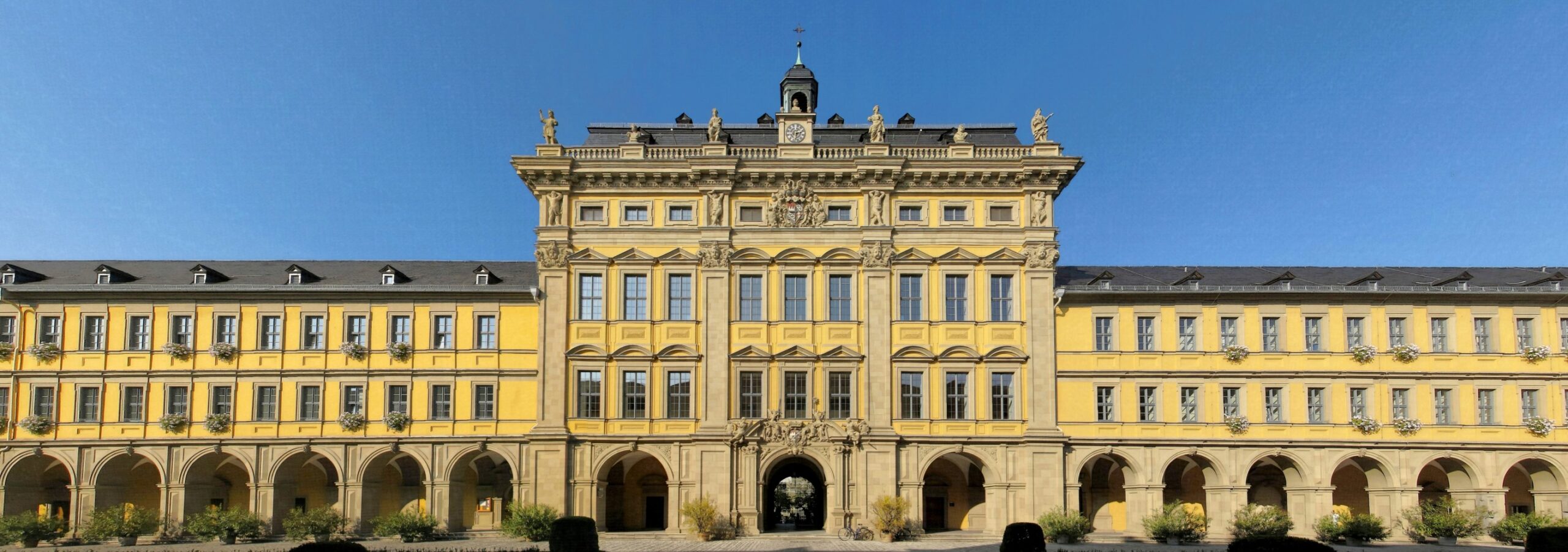
The impressive baroque architecture of the Juliusspital, designed by Antonio Petrini, attracts the attention of visitors. The facade of the main buildings is flanked by two massive towers and conveys an atmosphere of dignity and elegance. Inside the complex there are several courtyards and gardens that provide visitors with a... pleasant retreat offer.
An absolute highlight of the Juliusspital is the winery, which is one of the most renowned and oldest in the Franconian region. The winery covers around 170 hectares of vineyards stretching along the Main and produces some of the region's best wines, including the famous Würzburger Stein. During a tour of the winery, visitors can learn more about wine production and of course taste some of the excellent wines.
The Juliusspital also houses an impressive collection of art and cultural objects, including paintings, sculptures and historical furniture. A special highlight is the baroque library, which contains around 100,000 volumes and is one of the largest libraries in Würzburg.
A visit to the Juliusspital is a fascinating journey into the history, culture and tradition of Würzburg. The combination of impressive architecture, historical significance and the opportunity to enjoy some of the region's best wines makes Juliusspital an unforgettable experience for anyone visiting Würzburg.
7. The Würzburg Ringpark
The Würzburger Ringpark is a green jewel in the middle of the city and a perfect place to escape the hustle and bustle of city life. It surrounds the old town of Würzburg like a green belt and offers visitors a quiet and relaxing environment.
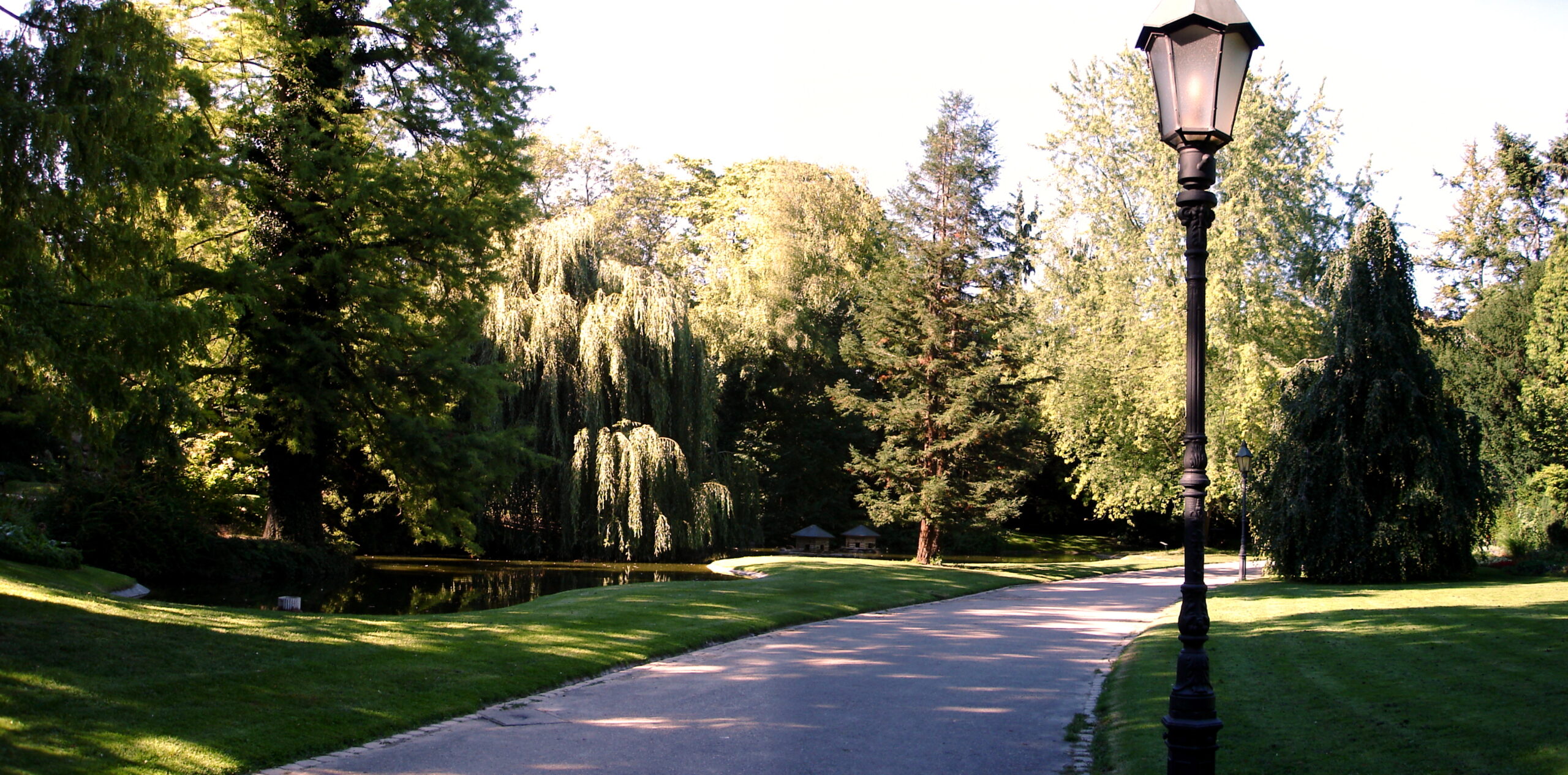
The ring park was created in the 19th century and was originally part of the city defenses. After this function became obsolete, the city fathers decided to convert the area into a public park. Today the Ringpark is one green oasis with beautifully landscaped paths perfect for walking, jogging or just relaxing.
The park is divided into different areas, each with its own character. There is the Rose Garden, which offers a sea of colors and scents in summer, the Japanese Garden with its carefully designed landscapes and tranquil pond, and the Butterfly Garden, which is home to a variety of plants that attract butterflies.
A special feature of the Ringpark is the multitude of monuments and statues that you can find on your way through the park. These works of art are not only beautiful to look at, but also tell stories from the history and culture of Würzburg.
Another highlight of the park is the observation tower, which offers breathtaking views of the city and the surrounding landscape. On a clear day you can even see the Marienberg Fortress and the Old Main Bridge from here.
The Würzburger Ringpark is more than just a place to relax and enjoy nature. It is a place that reflects the history and culture of Würzburg and offers visitors a unique insight into life in this fascinating city. Whether you are looking for a place to relax, go for a jog or just enjoy the beauty of nature, the Ringpark is a must when visiting Würzburg.
8. The Museum at the Cathedral
The Museum am Dom in Würzburg is an art museum of special standing and an absolute must for every art lover. It is located in close proximity to St. Kilian Cathedral and is one of the city's leading cultural institutions.
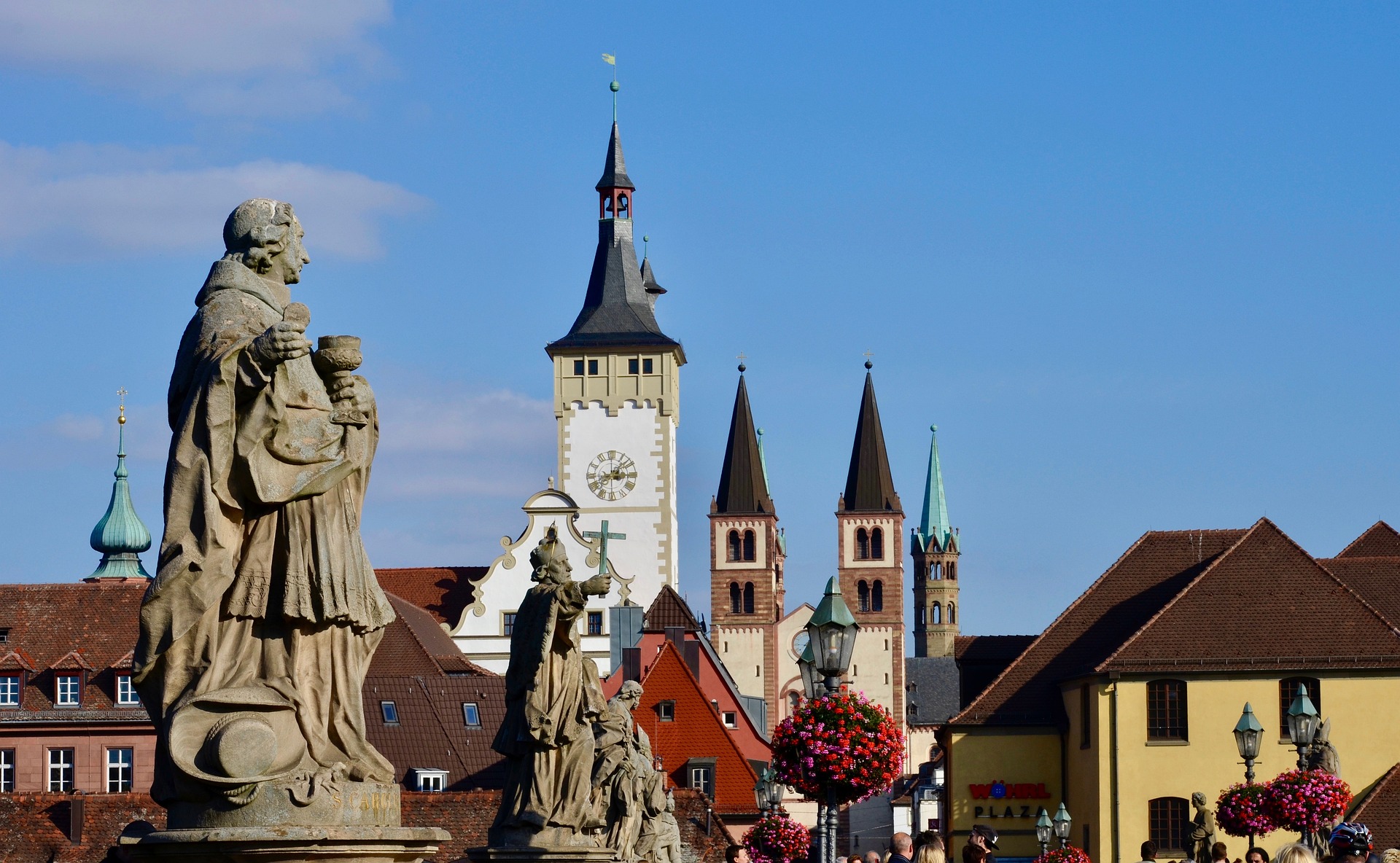
The museum opened in 2003 and houses an impressive collection of artworks spanning two millennia. The collection includes more than 700 works from the fields of painting, sculpture, graphics and textile art. The focus is on religious art and the interactions between art and society throughout history.
A highlight of the museum is the collection of medieval art, which contains a number of outstanding works including sculptures, altarpieces and church treasures. Particularly noteworthy is the “Würzburger Evangeliar”, a magnificently decorated manuscript from the 10th century.
However, the Museum am Dom does not only specialize in ancient art. It also presents an impressive collection of modern and contemporary art. Works by artists such as Emil Nolde, Ernst Barlach, Joseph Beuys and Gerhard Richter are represented, as are works by emerging artists.
The Museum am Dom is known not only for its excellent collection, but also for its attractive architecture. The modern, light-flooded building forms a fascinating contrast to the historical buildings in the surrounding area and offers the perfect setting for the works of art.
A visit to the Museum am Dom is a special kind of cultural experience. It offers visitors the opportunity to take a fascinating journey through the history of art and to immerse themselves deeply in the cultural identity of Würzburg. Whether you are a passionate art lover or simply have an interest in history and culture, the Museum am Dom is an absolute must when visiting Würzburg.
9. The Kapuzinerstrasse and the Würzburg wineries
Kapuzinerstrasse in Würzburg is not only a picturesque street in the heart of the city, it is also the gateway to some of the region's best wineries. Viticulture has a long tradition in Würzburg and the city is known for its excellent white wines, especially Silvaner.

Kapuzinerstrasse is one of the oldest streets in Würzburg and is characterized by its historic buildings and charming wine bars. It leads to the Käppele, a pilgrimage church with an impressive view of the city and the Main.
There are several wineries along the Kapuzinerstrasse and in its surrounding area that are part of the Würzburg Wine Route. They offer wine tasting and often they also have restaurants or wine bars where you can enjoy local specialties along with the wines.
The best-known wineries in the area include Weingut am Stein and Bürgerspital Weingut, both of which are known for their high-quality wines. The Weingut am Stein, located on the slopes of the Würzburger Stein, offers impressive views of the city and the Main. During a guided tour you can learn more about viticulture and of course taste the wines. The Bürgerspital Weingut is one of the oldest and largest wineries in Germany and is known for its excellent Silvaner.
The Kapuzinerstrasse and the wineries of Würzburg are an absolute must for every wine lover. They offer the opportunity to taste some of the region's best wines while enjoying the city's picturesque beauty and historic atmosphere. Whether you are a connoisseur or just a connoisseur, the Kapuzinerstrasse and the wineries of Würzburg offer an unforgettable experience.
10. The Main Franconian Museum
The Main Franconian Museum in Würzburg is one of the city's most important cultural institutions and an absolute must for anyone interested in the history and culture of the region. It is located in the Marienberg Fortress, an impressive structure that offers spectacular views of the city.
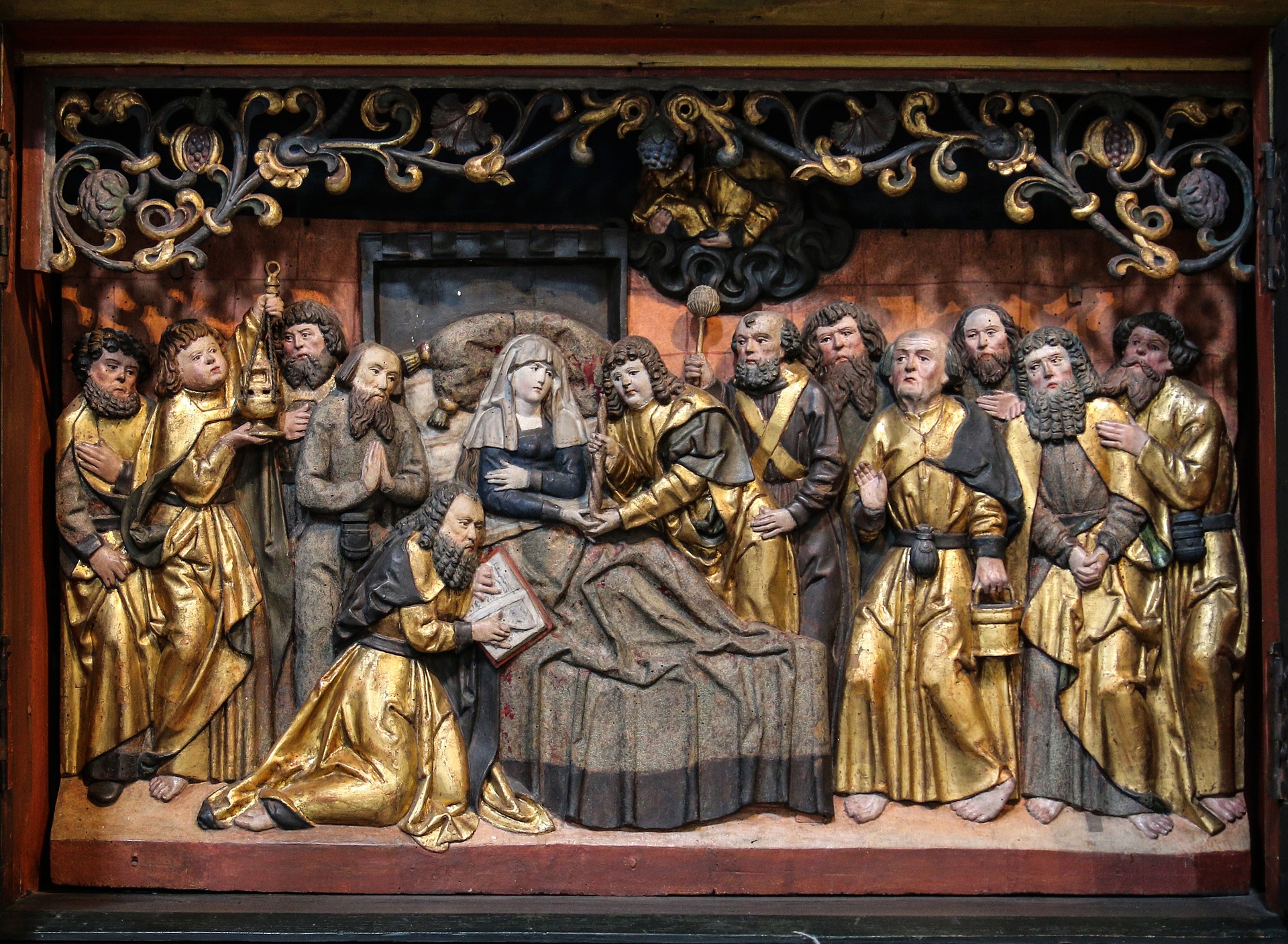
The museum was founded in 1859 and has continually expanded its collection since then. Today it contains more than 45,000 objects that document the rich history and culture of Franconia from antiquity to the present.
A highlight of the museum is the collection of Franconian handicrafts, which includes an impressive selection of ceramics, glass, metalwork and textiles. Particularly noteworthy is the collection of faience from the famous Würzburg factory.
Another focus of the museum is the collection of art and sculptures. It includes works from the Romanesque to the modern period and includes masterpieces by artists such as Tilman Riemenschneider and Balthasar Neumann. A highlight is the collection of Riemenschneider wood carvings, which is one of the largest and most important of its kind.
The Mainfränkisches Museum also houses an extensive archaeological collection, which includes finds from throughout the region. It extends from the Stone Age to the Middle Ages and provides a fascinating insight into the history of the region.
The Mainfränkisches Museum is not only a place of learning and discovery, but also a place of encounter and exchange. With its diverse exhibitions and events, it contributes to keeping Franconia's cultural heritage alive and making it accessible to a broad audience. A visit to Main Franconia museum is a fascinating journey through the history and culture of Franconia and an absolute must when visiting Würzburg.
11. The Würzburg Christmas market
A visit to the Würzburg Christmas market is an absolute must for anyone visiting the city during the festive season. This traditional Christmas market, one of the oldest in Germany, transforms the city center into a winter wonderland and offers a unique mix of festive atmosphere, regional treats and handmade gift ideas.
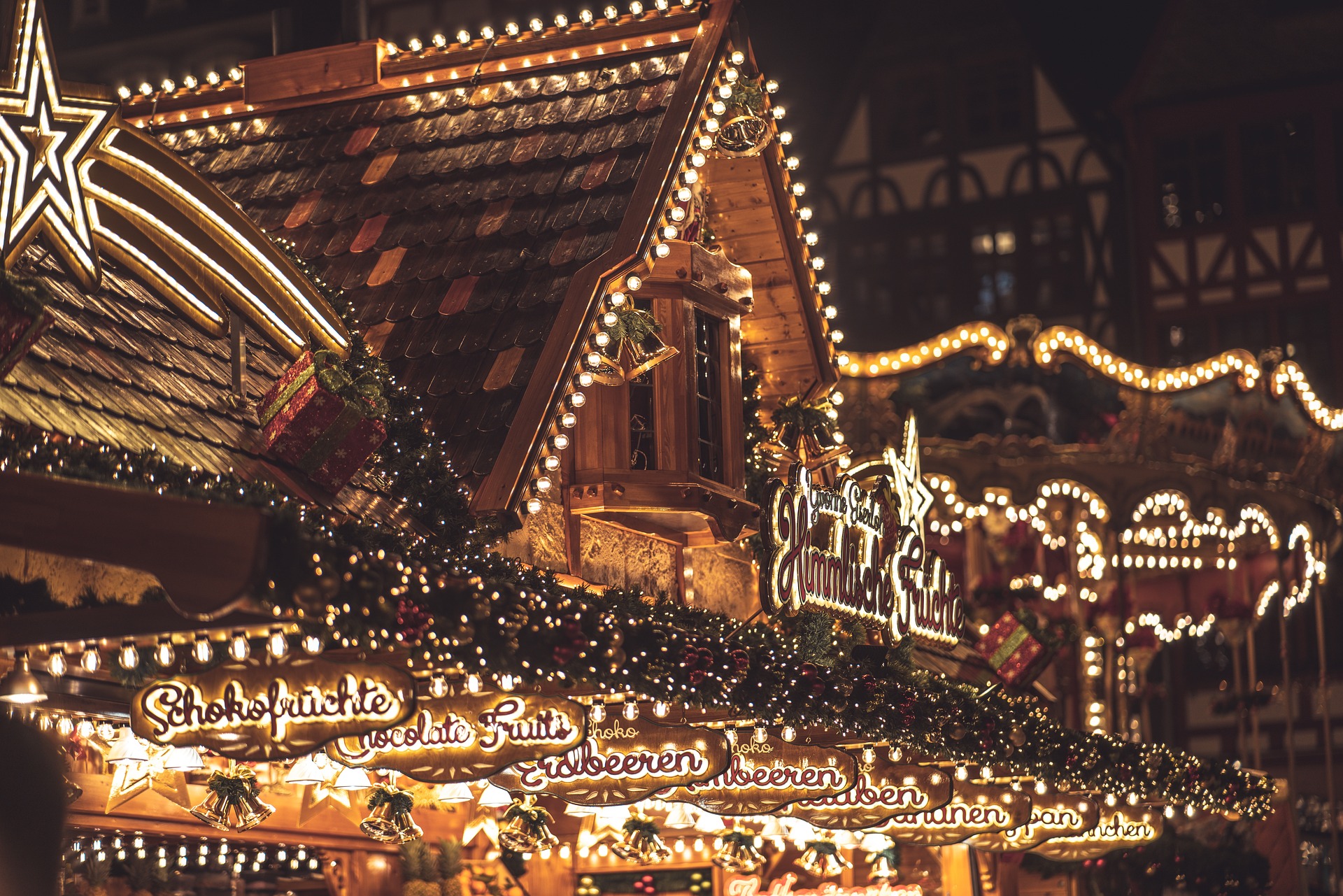
The Würzburg Christmas market usually takes place from the end of November to shortly before Christmas. Its main attraction is the impressive Christmas tree that is erected in the market square every year, with twinkling lights adding to the festive atmosphere.
More than 100 stalls are spread across the market square and the adjacent streets. Here you can find a variety of handmade items, from traditional Christmas decorations and wood carvings to hand-knitted scarves and ceramics. Many of the stalls also offer culinary specialties, including Franconian bratwursts, gingerbread, roasted almonds and of course the indispensable mulled wine.
A special highlight of the Würzburg Christmas market is the “Christmas Village”, which is set up in the inner courtyard of the town hall. In this charming village of wooden huts you will find a variety of stalls offering handmade gifts and treats. There is also a life-size nativity scene and a miniature train, which is particularly popular with younger visitors.
The Würzburg Christmas market is not only a place to shop and feast, but also a place to meet and celebrate. With its diverse program of live music, choir performances and children's activities, it offers something for every taste and every age.
A visit to the Würzburg Christmas market is a wonderful way to enjoy the festive atmosphere and immerse yourself in the traditions and customs of the region. With its charming atmosphere, large selection of stalls and varied program, the Würzburg Christmas market is a highlight of the festive season in Würzburg.
12. The Käppele
The Käppele, officially known as the pilgrimage church of the Visitation of the Virgin Mary, is one of the most famous sights in Würzburg and a place of great religious importance. It sits on a hill on the other side of the Main and offers breathtaking views of the city and the surrounding countryside.
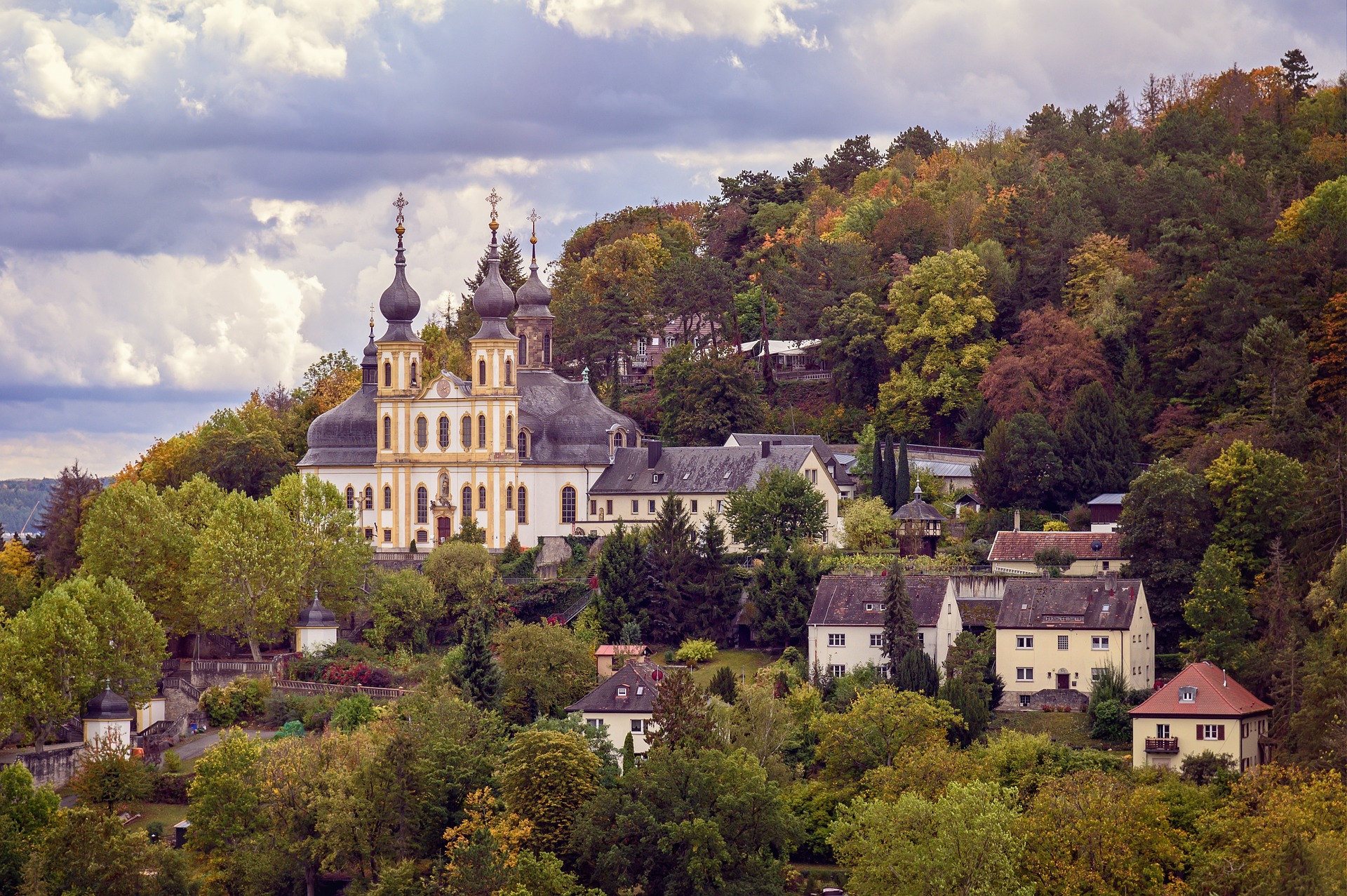
The Käppele was designed and built in the 18th century by the famous master builder Balthasar Neumann. It is one of the few pilgrimage churches in Germany built in the Baroque style, and its architecture is as impressive as its location.
The path to the church leads over 247 steps, the “Holy Stairs”, which were built based on the “Scala Sancta” in Rome. The stages are divided into three sections, each representing the Passion of Christ, the Seven Joys of Mary and the Seven Sorrows of Mary.
Inside the Käppele, the magnificent furnishings and rich decoration are impressive. Particularly noteworthy is the ceiling fresco in the central domed room, which depicts the Visitation of Mary. Another highlight is the high altar, which is crowned by a sculpture of the Visitation of Mary.
The Käppele is not only a place of worship, but also a popular place for concerts and cultural events. Its excellent acoustics and impressive atmosphere make it an ideal venue for musical performances.
A visit to the Käppele is a fascinating journey into the religious and cultural history of Würzburg. With its impressive architecture, rich amenities and breathtaking location, it is one of the top sights in Würzburg and an absolute must for every visitor to the city.
Conclusion
Würzburg is a city that combines history, culture and natural beauty. From magnificent castles and churches to picturesque vineyards and lively markets – the variety of Würzburg sights will certainly delight you. Each of these attractions has its own charm and tells a different story about the city's rich past and vibrant current life. Regardless of whether you are a history buff, an art lover, a nature lover or a wine fan, you are sure to find something that suits your interests in Würzburg. So, pack your bags and get ready for an unforgettable trip to this charming Franconian city!

 Suche
Suche
 Mein Konto
Mein Konto